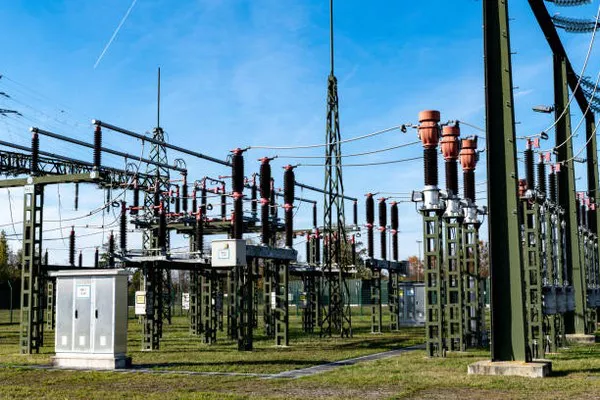Electricity, the lifeblood of our modern civilization, flows seamlessly through the grid, illuminating our homes, powering our industries, and fueling technological advancements. Yet, behind this effortless distribution of electrical energy stands a quiet and unsung hero of the electrical infrastructure—the electric transformer. In this comprehensive exploration, we will delve into the inner workings and crucial functions of electric transformers, shedding light on their indispensable role in ensuring the reliable and efficient delivery of electricity to our homes and businesses.
The Fundamental Purpose of Electric Transformers
Electric transformers are ubiquitous in our electrical systems, found at power stations, substations, and even perched on utility poles. Their primary mission is to facilitate the efficient transmission and distribution of electricity by altering the voltage levels of alternating current (AC) electrical energy. Transformers perform this essential task without the generation or consumption of electrical power, making them invaluable in the world of electrical engineering.
Transforming Voltage: The Heart of the Matter
At its core, a transformer consists of two coils of wire, known as the primary and secondary windings, wound around a magnetic core. The key principle governing transformer operation is electromagnetic induction, a discovery famously associated with Michael Faraday.
Step-Up Transformers: The primary role of a step-up transformer is to increase the voltage of the incoming AC supply. This elevated voltage is crucial for efficient long-distance transmission, as it reduces power loss during the journey from power stations to substations. Higher voltage allows for the use of thinner conductors, minimizing resistive losses. Step-up transformers are typically found at power generating stations.
Step-Down Transformers: Conversely, step-down transformers serve to reduce the voltage to levels suitable for safe distribution to homes and businesses. By stepping down the voltage, these transformers ensure that electrical power is delivered to consumers at the appropriate and safe levels. Step-down transformers are commonly seen on utility poles or in distribution substations.
The Transformative Power of Turns Ratio
The ratio of turns in the primary winding to the turns in the secondary winding, known as the turns ratio, is the defining factor in determining the change in voltage. For instance, if the turns ratio is 1:10, a step-up transformer will increase the voltage by a factor of 10, while a step-down transformer will reduce it by the same factor.
The Silent Efficiency of Transformers
Transformers operate silently and with remarkable efficiency, making them an eco-friendly choice in electrical distribution. Their core components, composed of laminated steel sheets, minimize energy loss due to hysteresis and eddy currents, ensuring that the vast majority of electrical power is transferred from the primary to the secondary winding.
Types of Transformers
Electric transformers come in various forms and sizes, tailored to specific applications within the electrical grid:
Distribution Transformers: These are the workhorses of the grid, found on utility poles and in substations. They reduce voltage levels to 240 volts for residential and commercial use, enabling safe and efficient power distribution.
Power Transformers: These giants, located at power stations, are responsible for elevating the voltage to levels conducive to long-distance transmission, minimizing energy loss over hundreds of miles.
Instrument Transformers: Vital for metering and protective relay applications, instrument transformers scale down high voltage and current to manageable levels for accurate measurement and control.
Auto Transformers: These transformers offer flexibility in adjusting voltage levels, with a single winding that serves both primary and secondary functions. Auto transformers are used in applications where precise voltage control is required.
Transformers and Grid Stability
Beyond voltage transformation, transformers play a critical role in grid stability. They enable the isolation of electrical circuits, preventing faults in one part of the grid from affecting the entire system. Moreover, they assist in reactive power compensation, enhancing the stability and reliability of the power grid.
Challenges in Transformer Technology
While transformers are a cornerstone of the electrical grid, they do face certain challenges:
Aging Infrastructure: Many transformers in use today are approaching the end of their operational lifespan, requiring extensive maintenance or replacement to ensure grid reliability.
Environmental Impact: The insulating oil used in transformers, often containing PCBs (polychlorinated biphenyls), can have harmful environmental consequences if not properly managed or disposed of.
Resilience to Extreme Conditions: Transformers must withstand extreme environmental conditions, such as extreme temperatures, floods, and seismic events, to maintain power supply during emergencies.
Transformer Maintenance and Monitoring
To ensure the continued reliability of transformers, regular maintenance and monitoring are essential. These activities include:
Oil Analysis: Periodic testing of the insulating oil within transformers to detect signs of degradation and potential issues.
Thermography: Infrared thermography is used to identify hot spots in transformers, indicating potential problems.
Partial Discharge Testing: This diagnostic method identifies areas of partial electrical discharge within the transformer, a sign of insulation breakdown.
Transformer Tap Changer Inspection: For transformers equipped with tap changers, regular inspections and maintenance are crucial to adjust the turns ratio as needed.
The Future of Transformers: Smart Grid Integration
As we enter the era of the smart grid, transformers are evolving to meet new challenges. Smart transformers, equipped with monitoring and communication capabilities, are poised to play a central role in grid automation, allowing for real-time monitoring, remote control, and enhanced grid resilience.
In conclusion
electric transformers are the unsung heroes of our electrical infrastructure, silently and efficiently facilitating the transmission and distribution of electrical power. Their role in ensuring grid stability, reducing energy loss, and supporting the growth of renewable energy sources is indispensable. As technology advances, smart transformers will continue to play a pivotal role in shaping the future of our interconnected electrical systems, ultimately benefiting both consumers and the environment.

